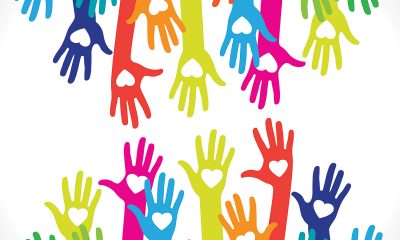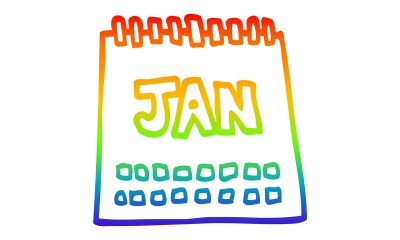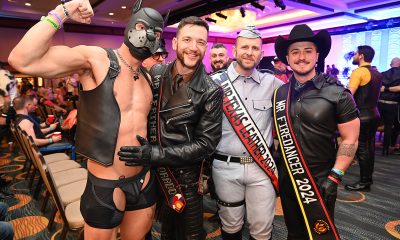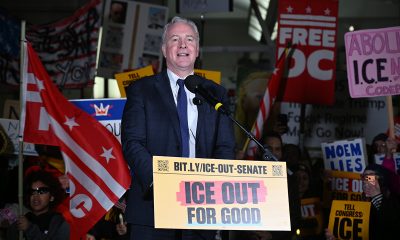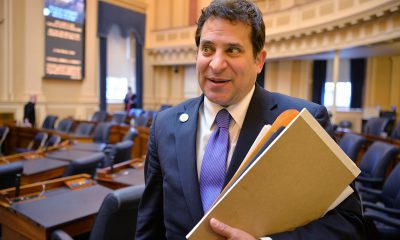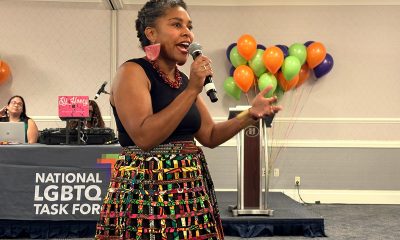Nightlife
D.C.’s hottest new LGBTQ nightclub is — Bunker
‘A real playground with energy that’s unlike anything else’
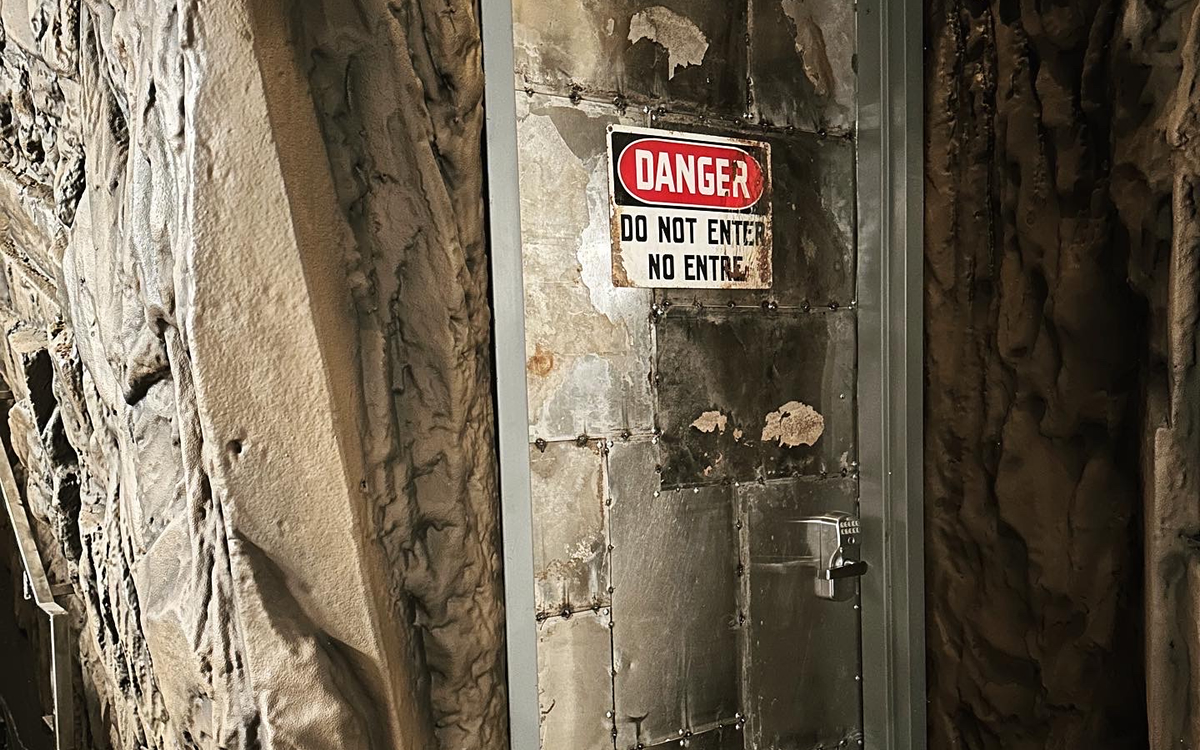
D.C.’s hottest new nightclub is — Bunker. Opening within the next month, Bunker takes over the space vacated by Tropicalia at the busy corner of 14th and U streets, N.W. And filling a need for a dedicated dance club, Bunker is set to take D.C. LGBTQ nightlife to the next level.
Owned by the producers of KINETIC Presents, Zach Renovatés and Jesus Quispe, Bunker will be open Thursday-Sunday, each night featuring a distinct theme.
Bunker takes up the mantle of celebrated nightlife spots that have closed in recent years: Cobalt, Town Danceboutique, Secrets, and DC Eagle.
“As a longtime DC resident, it was devastating,” says Renovatés. “ There was no guaranteed space to have that night out for dancing, just for our community.”
Running KINETIC Presents, Renovatés has been producing events for the LGBTQ community for nearly a decade. He works with business partner Quispe to host rotating parties at various venues, like Echostage and Bliss.
KINETIC, however, has become not just a company that throws parties, but a safe space. For example, KINETIC partners with Capital Pride Alliance in June and throughout the year, and produced the official nighttime parties during this year’s Mid-Atlantic Leather in partnership with Centaur MC. During the monkeypox outbreak, KINETIC provided attendees with health information and guidance. With its own space, Renovatés can leverage a physical location as a more substantive platform to gather and share.
Yet as KINETIC grew, so did the need for a dedicated, LGBTQ-owned-and-operated location for guests to get together.
Bunker presented itself as that location.
“This is a space that’s 100% for the LGBTQ community and by the LGBTQ community,” he says.
“Our goal,” he says, “is to grow nightlife, to bring more talent and more tourists. We want to support the economic growth of the city, and know that LGBTQ patrons can help do that with Bunker.”
What also sets Bunker apart is the live DJ sets that spin every night it’s open. “You can expect production levels similar to venues that KINETIC was in,” he says. “What is important to me is that it has unique music every night.”
Bunker will source local, national, and international DJs representing various genres. Pop, house, circuit, and disco will all be featured. In the works is also Sunday “disco daddy” tea day-to-night party. Other events include a nightly 7-9 p.m. happy hour as a social lubricant for the rest of the evening, whether that’s at Bunker or another location. Renovatés notes that he has strong relations with other gay bars in the city, and looks forward to being located within walking distance of many of them.
Renovatés says that drag and other entertainment are also in the works.
As for the actual space itself, “when I descended those stairs since I saw it as Tropicalia, the first thing I saw was beautiful concrete walls – that’s why we went with the name. We embraced that.”
“With Bunker, we’ve taken the interior down to its essentials and are rebuilding it exactly for what our community needs.” He shied away from leaning in too hard on the underground aesthetic. While plenty of concrete delivers the bunker vibe, “where Bunker shines is bringing in murals, lighting, sound, and more. It represents the color and vibrance of community.” The 11-foot ceilings certainly helped.
A custom-built, 600-pound steel door that “looks like it was blasted into the side of a mountain” welcomes partygoers. While inside is lots of steel and rock, it still has character. “It’s like a ‘60s Cold War shelter made fabulous,” he says. Lively murals by various artists are splashed across the space, with relaxed seating meant to be used earlier in the evening.
“Our goal is that every single night, someone local or visiting can get an incredible DJ and lighting experience in a safe space that’s so important today,” says Renovatés. Bunker is not only a place to dance, he notes, it is the embodiment of the community space that was so lacking.
As Bunker’s website teases few details on the club, Renovatés hints that Instagram may be the platform for more information as the grand opening gets closer.
As soon as that concrete door lets guests in, Renovatés wants people to expect “a real playground with energy that’s unlike anything else in D.C.”

District of Columbia
Tatianna to headline National PrEP Day event at Crush
Medication dramatically reduces HIV risk among users

Crush Dance Bar will join a nationwide inaugural celebration of National PrEP Day during a Thursday event that will feature “RuPaul’s Drag Race” star Tatianna.
MISTR, the nation’s largest telehealth platform for sexual health, and its companion brand SISTR are together launching National PrEP Day on Friday. The campaign aims to end HIV in the U.S. by enrolling 10,000 people in PrEP within 10 days.
PrEP is a pill or injection that reduces the probability of HIV by up to 99 percent.
MISTR and SISTR provide free, discreet PrEP delivery regardless of insurance status. The brands aim to promote stigma-free PrEP access for LGBTQ men and women of color during the campaign.
“We already have the tools to end HIV: the science, the medication, and the technology. What’s missing is the will, the access, and the equity,” said Tristan Schukraft, the founder and CEO of MISTR.
More than 39,000 people were diagnosed with HIV as recently as 2023. Only one in four of individuals eligible for PrEP are current users.
The Washington event is one of 16 events being held across the country to celebrate PrEP access and sexual health equity.
In addition to national events, MISTR is also behind a social media campaign encouraging people to sign up for PrEP. The national campaign will end with a National PrEP Day blue carpet event at The Abbey in West Hollywood, Calif., on Thursday, featuring celebrities and drag queens, to count down to National PrEP Day.
Nightlife
D.C. queer community partakes in ‘performative masc contest’
Event took place at Shakers on Sept. 25

Competitors showed off carabiners, guitars, and Old Spice deodorant to a packed bar crowd during a “performative masc contest” held at Shakers on Sept. 25.
Alphabet Soup Events, a queer event organization focused on the sapphic community, organized the contest at the LGBTQ-friendly bar on the U Street Corridor. The free event reached capacity, with cheers echoing outside and a line of patrons trailing on to the sidewalk.
The competition instilled a queer twist on the “performative male contest,” an event popularized through social media and seen across college campuses in recent months. While the latter satirizes men feigning certain beliefs or appearances to attract women, Alphabet Soup Events tailored the concept to the sapphic community.
The contest began with 14 competitors “catwalking” across the stage. Some presented a bouquet of flowers to the crowd, flaunted vinyl records, and pretended to flip through popular books. The crowd then watched competitors answer a series of questions, such as their favorite hobbies or the most romantic thing they’ve done for a former partner.
Competitor Jack Harris ultimately emerged as the winner of the contest. They applauded the event for “inviting people to express themselves.”
“As someone who has been told that they’re not masculine enough, I thought competing in a performative masc lesbian contest would be a unique opportunity to show people what masculinity means to me,” Harris said.
Harris stated that feeling like themselves during the contest all while “playing up” their gender expression made the experience fun.
Alphabet Soup Events initially introduced the contest via Instagram on Sept. 9, garnering more than 3,000 likes on the announcement post. The organization has hosted events in cities across the U.S. and has arranged past events for Washington’s sapphic community, such as boxing classes, and astrology-focused speed dating.
Becca Gaylin, an event attendee, noted she was “so excited” to see a performative masc event at Shakers following the virality of performative male contests.
“The D.C. queer scene is amazing and there are lots of sapphic events, but honestly this is just such a silly way to poke fun at stereotypes and get people together in a low stakes easy way,” Gaylin said.
Beyond the stage, the night featured local vendors, including a tattoo artist and a psychedelic storefront.
Soon after the event, Alphabet Soup Events posted competitors’ Instagram accounts, divided into “Single” and “Not Single” categories. The organizers also teased a follow-up contest, writing “femmes… ur NEXT!” in an Instagram caption.
More information about Alphabet Soup Events can be found at their Instagram page.
Nightlife
D.C.’s queer bars gearing up for fall after disappointing summer
Troop presence blamed for lower sales

The great gay summer migration is over, and the LGBTQ community has flocked back to D.C. only to be confronted with unwanted federal troops in the city. Yet the gay nightlife community maintains optimism, hope, and excitement, despite the political circumstances.
When the federal troop presence began in mid-August, bars reported steep losses in revenue and customers. The patrols also aligned with the regular seasonal downturn, as many regular patrons travel during this high vacation period. WUSA reported that restaurants and bars saw reduction in dining and reservation numbers and RAMW even extended Summer Restaurant Week for another seven days to encourage dining out. “Generally speaking, the community seems to be on edge,” says Ed Bailey, who owns Trade and Number Nine.
Dave Perruzza, who owns Pitchers, noted that sales have dropped by thousands of dollars, and foot traffic has drastically declined. The bar attempted to ameliorate the issue by throwing special events, but attendance remained low.
Yet, “the fall is traditionally the busiest time for nightlife in D.C.,” says Bailey. For that reason, “we are ramping up for a busy fall after an unusual summer [at the bar].” Trade, after unveiling its massive expansion that includes a larger outdoor patio, a pulsating dance floor, and a subterranean lair, is going to provide new programming for its expansion. Look out for a new monthly event with Flower Factory on the first Saturday of each month – as well as a huge party later this year to celebrate Trade’s 10-year anniversary. Number Nine, a bar around the corner, will be dressing up this fall with a pop-up bar catering to all the Pumpkin Spice vibes for the months of October and November.
“With all that D.C. has been going through, it is nice to have a full and robust nightlife to look forward to,” he says.
Mark Rutstein of Crush agrees.
“We are ready for D.C. to get the love it deserves, and to return to the vibrant city it has always been. A reduction of crime is always welcomed, but this is excessive and scaring people who haven’t lived here. I’ve been here for over 25 years. It’s my home,” said Rutstein.
Keaton Fedak, owner of Kiki on U Street, says that, “No matter what happens outside, our community is always welcome here!”
“Coming off an amazing WorldPride where we witnessed the beauty of a united LGBTQ+ community, we must continue to use our collective voices to fight for our rights, spaces, and protections,” says Melvin Thomas, Outreach, Events and Marketing Manager at Kiki. “Every time I walk into Kiki and see our guests laughing, talking, hugging, kissing, and dancing, it reminds me how important it is for local LGBTQ+ owned and operated businesses to keep opening their doors and building programs that resonate with people, bringing them joy and a sense of safety.”
Kiki, like many bars, sponsors a variety of Stonewall sports. As kickball, bocce, dodgeball, and more kick off for the fall season, Kiki will be hosting many a happy hour, Sunday Funday, and party for thirsty athletes.
Over the past several months, beyond Trade’s celebrated expansion, D.C. has also welcomed new additions to the LGBTQ bar scene. District Eagle and its adjoining chicken shack Lucky Pollo opened its doors earlier this year, and the dance party-forward Revolt also debuted in August between Bunker and the Eagle. Plus, the downstairs space of MXDC, called Diosa Lounge, transforms into a new concept called “Ricky’s” on Sundays: An inclusive Sunday Funday of rotating parties and events, hosted by Tara Hoot and other drag performers, along with a rotating roster of queer DJs.
In terms of LGBTQ-focused events, later this month, RuPaul is set to DJ at Echostage; 9:30 Club and its affiliates (Atlantic, Merriweather, The Anthem, Lincoln) are not slowing down their lineups of acts with LGBTQ members or LGBTQ fan bases either. Some examples: Wet Leg, Addison Rae, Renee Rapp, Doechii, Indigo De Souza, King Princess, and Halsey are all performing; plus the Hokus Pokus Live show and “Rocky Horror Picture Show” events at Lincoln Theater. October is also home to the High Heel Race on 17th Street, the Miss Adams Morgan Pageant XXXVII on Oct. 4, whose theme is “Studio 54 Ever”; and HRC’s Chefs for Equality.
“As we continue on this path of the unknown and the ever-changing climate in the District, the queer community is gearing up to top off the year by celebrating who we are, throwing inclusive parties and events, and rolling with the sentiment that we have throughout the years: We’re here, and we’re queer,” says Brandt Ricca, who runs Nora Lee, an agency that represents several LGBTQ institutions.
-

 Iran5 days ago
Iran5 days agoGrenell: ‘Real hope’ for gay rights in Iran as result of nationwide protests
-

 Congress5 days ago
Congress5 days agoVan Hollen speaks at ‘ICE Out for Good’ protest in D.C.
-

 Virginia5 days ago
Virginia5 days agoMark Levine loses race to succeed Adam Ebbin in ‘firehouse’ Democratic primary
-

 LGBTQ Non-Profit Organizations5 days ago
LGBTQ Non-Profit Organizations5 days agoNational LGBTQ Task Force brings Creating Change conference back to D.C.
